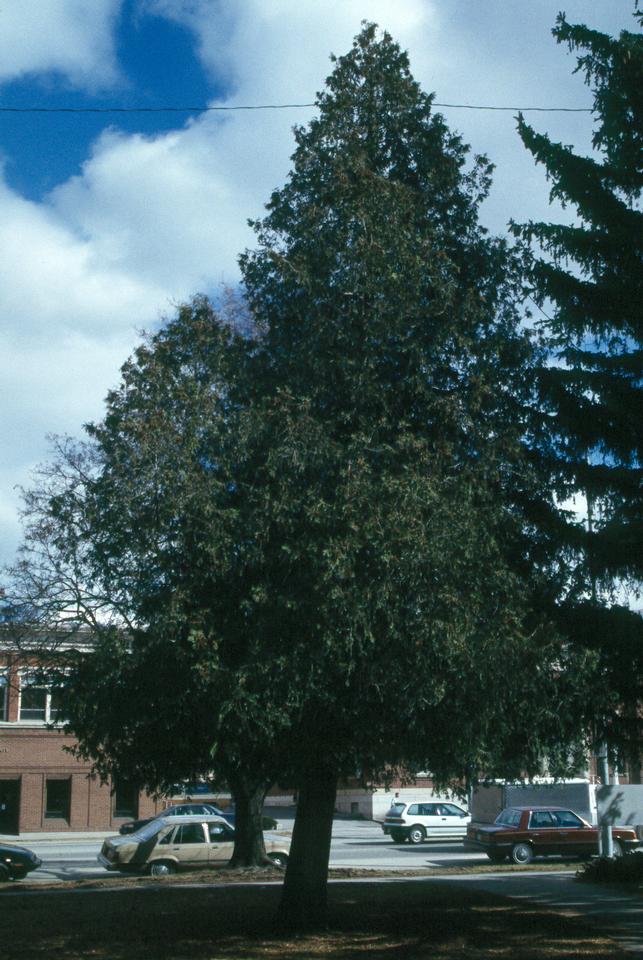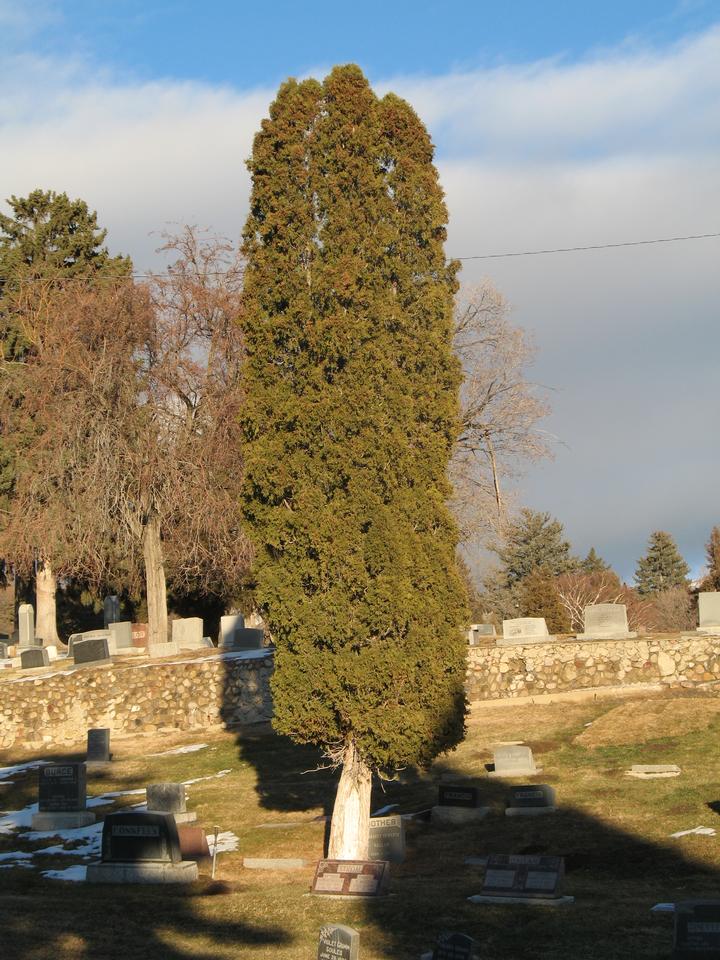White-Cedar, Northern or E. Arborvitae
Thuja occidentalis
Cupressaceae - Cypress
Description
Leaves: Small; scale-like; flattened along twig in pairs; yellow-green to green; evergreen.
Twigs/buds: Twigs slender; covered by foliage; arranged mostly in horizontally flattened or drooping sprays. Buds very small; indistinct; not useful for identification purposes.
Flowers/fruit: Monoecious. Fruit a cone; 1/3" to 1/2" long; upright; 4 fertile scales plus several infertile scales; matures in one season.
Bark: Thin; narrow, interlacing ridges; red-brown to gray-brown; fibrous.
Wood: Moderately important; sapwood nearly white and thin; heartwood light brown; light weight; very resistant to decay; used for poles, railroad ties, fence posts, fencing, lumber.
General: Native to northeast U.S., Lake States, Appalachian Mountains, and southern Canada. Not a true cedar. Medium to fairly large tree, medium to slow growth. Often found in swampy areas. Intermediate shade tolerance. Prefers abundant water, but may survive on drier sites.
Landscape Use: More commonly planted in Utah in the past than now, though these are very desirable trees. Many different canopy forms are available, from shrubby, to large pyramidal, to weeping. Good as hedge, visual screen, windbreak, or as specimen trees. Cold hardy but may need protection on harsh, dry, windy sites. Does not like extreme heat and dry conditions. Few insect or disease problems. Deer love feeding on the foliage and will denude lower branches if they have access to them. Zones 2-8.
Cultivars: Numerous varieties
Characteristics
General
| Family | Cupressaceae - Cypress |
|---|---|
| Cultivar Availability | Yes |
| Hardiness Zone | 2-8 |
| Type | Conifer |
| Utah Native | No |
Growth
| Growth Rate | Medium |
|---|---|
| Mature Height | Medium |
| Longevity | Medium |
| Is Good Under Power Lines | No |
| Crown Shapes | Pyramidal |
Ornamental
| Bark | No |
|---|---|
| Fall Color | No |
| Flowers | No |
| Foliage | Yes |
| Fruit | Yes |
Tolerance
| Shade | Low |
|---|---|
| Salt | Medium |
| Drought | Medium |
| Poor Drainage | High |
| Alkalinity | High |
| Transplanting | Medium |








